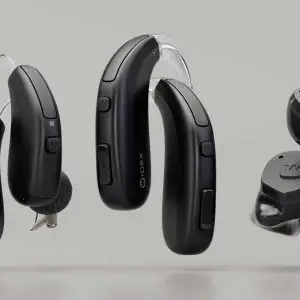

If you’ve ever walked into a big church, gymnasium, restaurant with high ceilings, or even your own living room with lots of bare surfaces and thought, “Wow, everything sounds echoey in here,” you’ve experienced reverberation. Reverberant rooms can be hard for everyone, but for those with hearing loss, even those who wear hearing aids, reverberant spaces can make listening noticeably harder.
Let’s break down why these environments are tricky and what practical steps you can take to hear better in them.
A room becomes “reverberant” when sound bounces around instead of being quickly absorbed. Several elements contribute to this effect:
Materials like:
These surfaces don’t absorb sound, they reflect it. Sound waves bounce off them repeatedly, causing lingering echoes.
Rooms with:
…give sound more space to travel and reflect.
Windows are essentially big mirrors for sound. Similarly, bare walls with no curtains, art, or soft décor increase reflection.
Soft materials such as rugs, drapes, cushions, and upholstered furniture act as sound absorbers. When a room lacks these, reverberation increases.
Reverberation adds “extra” sound after the original sound. This makes speech less clear. You may notice:
People with hearing loss often struggle more in reverberant settings because the auditory system already has reduced access to crisp speech cues, and reverberation blurs these further.
The good news: There are strategies that can make communication easier. If you use hearing aids, you have even more tools available.
If your hearing aids support a remote mic:
This brings the direct speech signal into your hearing aids and bypasses much of the reflected sound. The closer to the speakers mouth the better the signal!
Most modern hearing aids let you change:
In a reverberant room, reducing the overall loudness slightly or increasing speech focus can help.
Directional microphone modes help your hearing aids “zoom in” on the person in front of you while reducing surrounding reflections.
This can be:
Small changes can make a big difference:
Reverberation combined with noise is especially challenging. Turn off TVs, music, or fans when possible.
It’s okay to say:
Most people are happy to help once they understand why it matters.
Reverberant rooms are naturally challenging listening environments, especially for people with hearing loss. But understanding why they’re difficult, and using the right tools and strategies, can usually help improve communication.
With hearing aids, remote microphones, directional focus, and smart adjustments through your app, you can (hopefully!) improve your clarity even in echoey rooms.
Enjoy the 4-in-1 experience of this awesome hearing aid accessory:
Simply enter your email below and we’ll send you your discount code instantly. Start saving and experience better hearing care with trusted products and support.